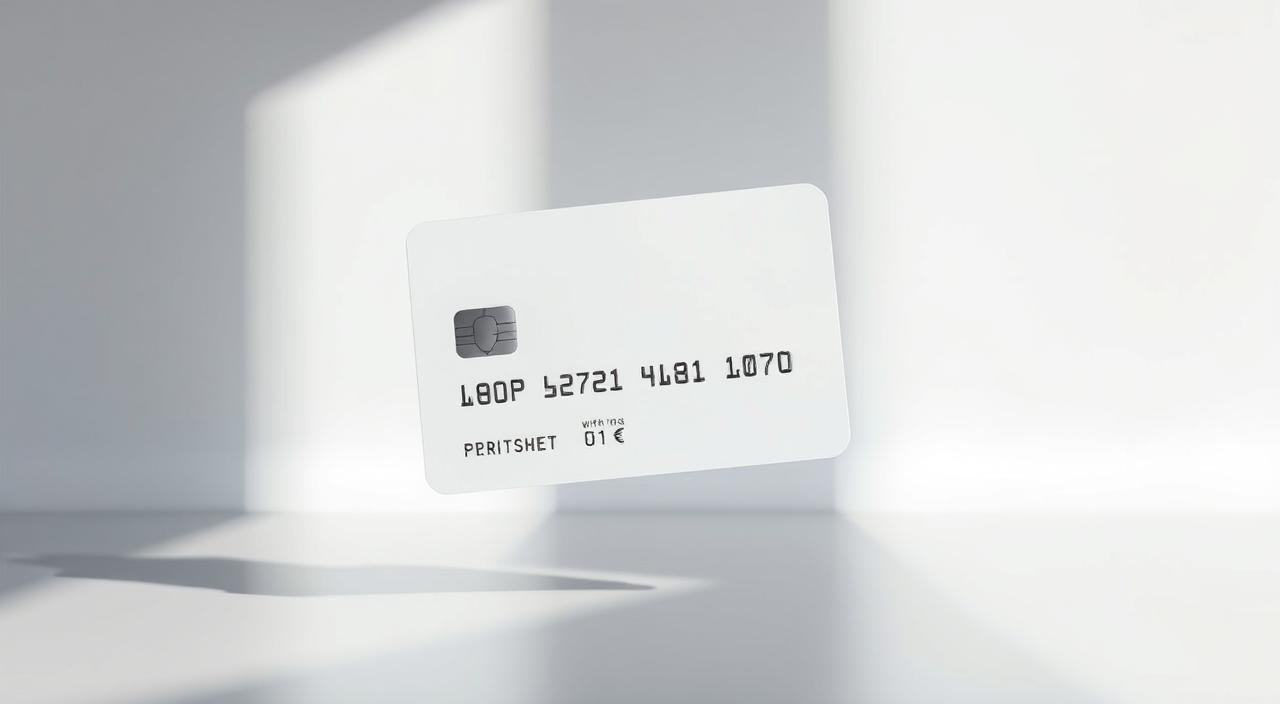Financial freedom is not just a dream. It’s a smart choice. Exploring interest-free credit card offers shows a powerful tool for changing your financial life. An 18-month zero interest credit card is more than a payment method. It’s a chance to manage costs, pay off debt, and grow financially strong.
Credit card offers have changed, and smart shoppers are finding their benefits. The 18-month interest-free credit card gives you a chance to buy big or pay off debt without extra interest. This is a big financial relief.
We know how complex personal finance can be. This guide will help you understand how to use these credit card offers wisely. We’ll show you how to make choices that fit your financial goals.
Key Takeaways
- Zero interest periods can provide significant financial flexibility
- Strategic planning is key for getting the most from credit cards
- Knowing the terms and conditions helps avoid surprise charges
- Interest-free cards can be great for managing debt
- Using them wisely helps keep your credit healthy for the long term
Understanding Interest-Free Credit Card for 18 Months
Zero interest credit cards are a special tool for managing money. They let you borrow without paying interest right away. This can help you handle your expenses better.
Credit cards can be tricky, but interest-free ones offer a big advantage. For 18 months, you can buy things and move money around without extra interest.
Distinguishing Features from Regular Credit Cards
Zero interest credit cards stand out because they:
- Don’t charge interest during the promotional period
- Can save a lot on big buys
- Let you combine old debts
Understanding the Interest-Free Period Mechanics
The interest-free period is a special time. It lets you enjoy zero percent APR. This period usually lasts from 12 to 18 months, depending on the card.
“An interest-free period is like a financial breathing room, allowing you to manage expenses without immediate financial pressure.” – Financial Experts
Essential Terms and Conditions
It’s important to know the rules of your zero interest credit card:
- Minimum spending needs
- Balance transfer fees
- Regular APR after the promo ends
- Possible penalties for late payments
Knowing these details helps you get the most from your interest-free card. It also keeps you safe from financial traps.
Benefits of Zero Interest Credit Cards in Today’s Economy
Dealing with money problems has gotten harder in recent years. Zero interest credit cards offer a smart way to manage money. They help people control spending and lower financial stress.
Looking at the benefits of zero interest periods shows why these cards are valuable. They help with:
- Consolidating high-interest debt
- Making big purchases without extra interest
- Handling tight money situations
- Building credit responsibly
Zero interest cards do more than just help in the short term. They can lead to long-term financial health. By planning purchases and payments, people can spend more and save money.
Smart financial management isn’t about avoiding credit, but using it wisely.
Our studies show that smart users of zero interest cards save a lot of money. The secret is good financial planning and spending wisely.
Before getting a zero interest card, it’s important to check the terms. Know the promotional period and have a plan to pay back. This way, you get the most benefits with the least risk.
Top Credit Card Issuers With 18-Month Zero Interest
Finding the right zero interest credit card can be tough. We’ve looked into the top issuers to guide you. This way, you can pick a card that fits your financial needs.
Our research shows several top picks from major banks. Each has special features to draw in cardholders. They all offer zero interest deals.
Major Banks and Their Standout Offerings
- Chase Slate: Known for excellent balance transfer options
- Citi Diamond Preferred: Longest promotional zero interest period
- Capital One Quicksilver: Rewards-focused zero interest card
Detailed Card Feature Comparison
| Credit Card Issuer | Promotional Period | Annual Fee | Balance Transfer Fee |
|---|---|---|---|
| Chase Slate | 15 months | $0 | $0 first 60 days |
| Citi Diamond Preferred | 18 months | $0 | 3% or $5 |
| Capital One Quicksilver | 15 months | $0 | 3% |
Application Requirements and Approval Strategy
To get approved for zero interest offers, you need:
- Credit score of 670 or higher
- Stable income
- Low existing debt-to-income ratio
- Clean credit history
Before applying, check your credit score. This can help you get approved for these great zero interest cards.
Credit Score Requirements for Qualifying
Knowing the credit score needs is key when you apply for an 18-month zero interest credit card. Your FICO score is like a financial fingerprint for lenders. It plays a big role in getting approved.
Most credit card companies group scores into ranges:
- Excellent Credit: 750-850 (Highest approval chances)
- Good Credit: 700-749 (Strong qualification chances)
- Fair Credit: 650-699 (Approval is possible)
- Poor Credit: Below 650 (Approval is tough)
For 18-month zero interest credit cards, issuers usually want applicants with good to excellent scores. These scores show you’re financially reliable and less likely to default. But, lenders also look at your income and debt levels.
To boost your approval chances, try these steps:
- Check your current credit score
- Pay down existing credit card balances
- Clear up any outstanding collections
- Avoid applying for many credit cards at once
Remember, each credit card application can hurt your credit score. Planning wisely can increase your chances of getting approved for great zero interest credit card deals.
see you might like:grants-to-help-get-out-of-debt-2
Strategic Ways to Use Your Interest-Free Period
An 18-month interest-free credit card is a great chance to change your money habits. Smart users can use this time to make big improvements in their finances. They do this by planning carefully.
To get the most out of your interest-free period, you need to think strategically. We’ll look at three key ways to make the most of this credit opportunity.
Debt Consolidation Opportunities
Debt consolidation works well with an interest-free credit card. You can move high-interest debts to one card. This makes your payments easier and can save you money on interest.
- Simplify your monthly payments
- Potentially reduce overall interest expenses
- Create a clear path toward financial freedom
Large Purchase Planning
The 18-month interest-free period is perfect for big buys. Strategic financial planning lets you pay for big items over time. This way, you avoid extra interest charges.
Balance Transfer Benefits
Balance transfers are a smart move for credit card debt. Moving balances to an interest-free card can:
- Reduce total interest payments
- Speed up debt repayment
- Improve your credit score
But, it’s important to plan well and pay back on time. This way, you can really benefit from these financial strategies.
Hidden Fees and Charges to Watch Out For

Zero interest credit cards might seem like a great deal. But, hidden fees can make them very costly. It’s important to know about credit card fees to keep your money safe.
Experts say to read the fine print before getting a credit card. Many people miss important fees that can affect their budget.
- Balance Transfer Fees: These can be 3-5% of the amount you transfer, adding to your debt.
- Annual Membership Fees can range from $0 to $500.
- Foreign Transaction Fees can be up to 3% on purchases abroad.
- Cash Advance Fees can be a flat rate or a percentage of the amount taken out.
Hidden fees can add up fast if you’re not careful. It’s smart to make a list of possible fees before getting a zero interest credit card.
“Know your fees before they know your wallet” – Financial Planning Insider
Many people don’t realize how much hidden fees can cost. To avoid this, follow these steps:
- Read the terms and conditions fully.
- Calculate possible fees before applying.
- Compare different credit card offers.
- Understand the penalties for late payments.
Being aware of credit card fees is key to avoiding surprises. By being informed, you can enjoy the benefits of zero interest credit cards without financial risks.
Balance Transfer Process and Timeline
Understanding the credit card transfer process can seem tough. But knowing the steps helps you manage your money better. A balance transfer can save you money on interest and help you pay off debt faster.
The balance transfer process has several important steps. You need to pay close attention to each one. This way, you can get the most out of this financial move.
Step-by-Step Transfer Guide
- Research and select a credit card with a competitive 0% introductory APR
- Check the credit card transfer limit and eligibility requirements
- Gather necessary personal and financial information
- Complete the online or phone application for the new card
- Provide details of the existing balance you wish to transfer
- Wait for approval and transfer processing (typically 7-14 days)
Common Transfer Mistakes to Avoid
When you do a credit card transfer, there are common mistakes to watch out for. Knowing these can help you avoid them:
- Ignoring balance transfer fees – Most cards charge 3-5% of the transferred amount
- Failing to pay off the balance before the promotional period ends
- Continuing to use the old credit card and accumulating additional debt
- Not calculating the total possible savings from the transfer
We suggest you plan your balance transfer carefully. Figure out how much you can save, know all the fees, and make a solid repayment plan. This way, you can make the most of your zero-interest period.
Creating a Repayment Plan Before the Promotional Period Ends

Creating a smart debt repayment plan is key when using an interest-free credit card. Our strategy aims to use the zero-interest time wisely. We make sure to pay off all debt before high interest rates start.
To make an effective plan, break down your total debt into smaller monthly payments. This way, you avoid financial surprises when the promotional period ends.
- Calculate total balance owed
- Determine monthly payment required
- Create a structured repayment timeline
- Set automatic payment reminders
There are two main ways to manage your debt:
| Repayment Method | Key Strategy | Psychological Impact |
|---|---|---|
| Snowball Method | Pay smallest debts first | Builds motivation quickly |
| Avalanche Method | Target highest interest debts | Minimizes total interest paid |
Keep track of your progress each month and tweak your plan if needed. Consistency is key to successful financial planning.
A well-structured repayment plan turns your zero-interest chance into a strong debt-clearing strategy.
What Happens After the 18-Month Period
As your interest-free credit card promotional period ends, knowing about post-promotional APRs is key. This change from zero interest to regular rates can affect your budget.
When the 18-month zero interest period ends, your credit card rates will go back to the standard APR. This change can surprise many if they’re not ready for it.
Regular APR Implementation
After the promotional period, your credit card issuer will apply their standard interest rates. These rates can be between 16% and 24% based on your credit score.
- Standard APR kicks in right after the promotional period ends
- Interest is charged on your remaining balance
- Rates vary by credit score and issuer policies
Options for Extending Zero Interest
Here are some ways to keep zero interest and manage your debt:
- Transfer your balance to another zero-interest card
- Talk to your current issuer about extending the rate
- Plan your repayment before the promotional period ends
| Strategy | Potential Savings | Difficulty Level |
|---|---|---|
| Balance Transfer | High | Medium |
| Negotiation | Medium | Low |
| Repayment Planning | Medium | High |
Understanding how to extend zero interest and prepare for rate changes helps. It keeps financial stress low and lets you control your debt.
Building Credit While Using Zero-Interest Cards

Zero-interest credit cards are great for building credit if used right. They let you manage your money and boost your credit score. It’s important to know how using credit and making payments affects your score.
Building credit needs careful planning and smart money habits. Here are some tips to use zero-interest cards well:
- Keep your credit use low (less than 30% of what you can borrow)
- Pay on time every month
- Check your credit score often
- Don’t open too many new credit lines at once
Your payment history is key to your credit score. Zero-interest cards help you build a good payment record by:
- Setting up automatic payments
- Setting reminders for payments
- Paying more than the minimum
Pro tip: View your zero-interest credit card as a tool for managing money, not for getting into debt.
Responsible credit use is the cornerstone of long-term financial health.
By sticking to these tips, you can turn your zero-interest card into a tool for building credit. It will help you reach your financial goals.
Common Pitfalls and How to Avoid Them
Using zero interest credit cards needs a smart plan. Many people make mistakes that hurt their finances. Knowing these mistakes helps avoid them and keeps your money safe.
Here are the main errors to steer clear of:
- Overspending beyond your budget
- Neglecting minimum monthly payments
- Failing to track promotional period end dates
- Using the card for unnecessary purchases
Overspending is the biggest risk. The promise of no interest can lead to buying things you can’t afford. Staying disciplined is essential to make the most of these offers.
| Pitfall | Potential Consequence | Prevention Strategy |
|---|---|---|
| Missing Payments | Loss of Promotional Rate | Set Automatic Payments |
| Maxing Out Credit Limit | Credit Score Damage | Maintain Low Credit Utilization |
| Late Transfers | Additional Transfer Fees | Plan Balance Transfers Early |
Make a solid plan before getting a zero interest credit card. Keep track of your spending, set reminders for payments, and focus on paying off the balance during the promotional period.
Smart credit card use is about strategic planning, not immediate gratification.
By knowing these common mistakes, you can turn zero interest credit cards into a strong financial tool. This way, you can borrow responsibly and keep your finances healthy.
Alternative Options if You Don’t Qualify
Not everyone can get an 18-month zero interest credit card. But, there are many other ways to improve your credit and manage money well.
If you can’t get a low interest credit card, don’t worry. There are smart ways to build your credit and get better financial options.
Exploring Low-Interest Financial Alternatives
- Secured credit cards with lower interest rates
- Credit-builder loans from local credit unions
- Peer-to-peer lending platforms
- Store credit cards with more lenient approval requirements
Credit Building Strategies for Future Approval
To boost your credit score, take consistent, smart steps. Focus on areas that lenders look at:
- Maintain timely bill payments
- Reduce existing credit utilization
- Monitor credit reports regularly
- Dispute any incorrect negative entries
Credit unions and online lenders help those with bad credit. They often have easier rules than big banks.
Practical Financial Alternatives
If you can’t get regular credit, try these:
- Prepaid debit cards
- Secured credit cards
- Credit-builder accounts
- Short-term personal loans with competitive rates
By using these strategies and looking at different options, you can improve your credit. This will help you get better low interest credit cards later.
Conclusion
Interest-free credit cards are a powerful tool if used wisely. Our detailed look shows they can greatly affect your money choices. This is true when you plan carefully and stay disciplined.
Managing credit well means understanding the fine points of these cards. It’s smart to think about your money situation, how you spend, and if you can pay back before getting one. The good points are clear, but the dangers of misuse are real.
To use credit cards well, you need to do your homework and know the rules. Also, you must spend wisely and stick to good money habits. This way, you can use these cards to control costs, pay off debt, and even boost your credit score.
Remember, these cards should be seen as a smart financial move, not a chance to spend without limits. Always think before you spend, pay on time, and keep your financial future in mind.
frequently asked questions
What is an interest-free credit card?
An interest-free credit card offers a special period with no interest on purchases or balance transfers. This period is usually 12-18 months. It helps you save money and pay off debt faster.
How does the 18-month zero interest period work?
For 18 months, you won’t pay interest on new purchases or balance transfers. But, you must make minimum payments each month. After 18 months, regular interest rates apply to any balance left.
What credit score do I need to qualify?
You need a good to excellent credit score, 670 to 850, for these cards. Some may accept scores as low as 650. But, the best deals are for those with scores over 700.
Are there any balance transfer fees?
Yes, balance transfer fees are 3-5% of the amount transferred. For example, a $5,000 transfer might cost $150-$250. Despite this, many find these cards worth it for the interest savings.
Can I use the card for new purchases during the promotional period?
Yes, you can make new purchases during the zero interest period. But, be careful not to build up debt you can’t pay off before the period ends.
What happens if I don’t pay off the full balance before the promotional period ends?
If you don’t clear the balance before the period ends, you’ll face the regular interest rate. This can lead to a lot of extra interest charges.




